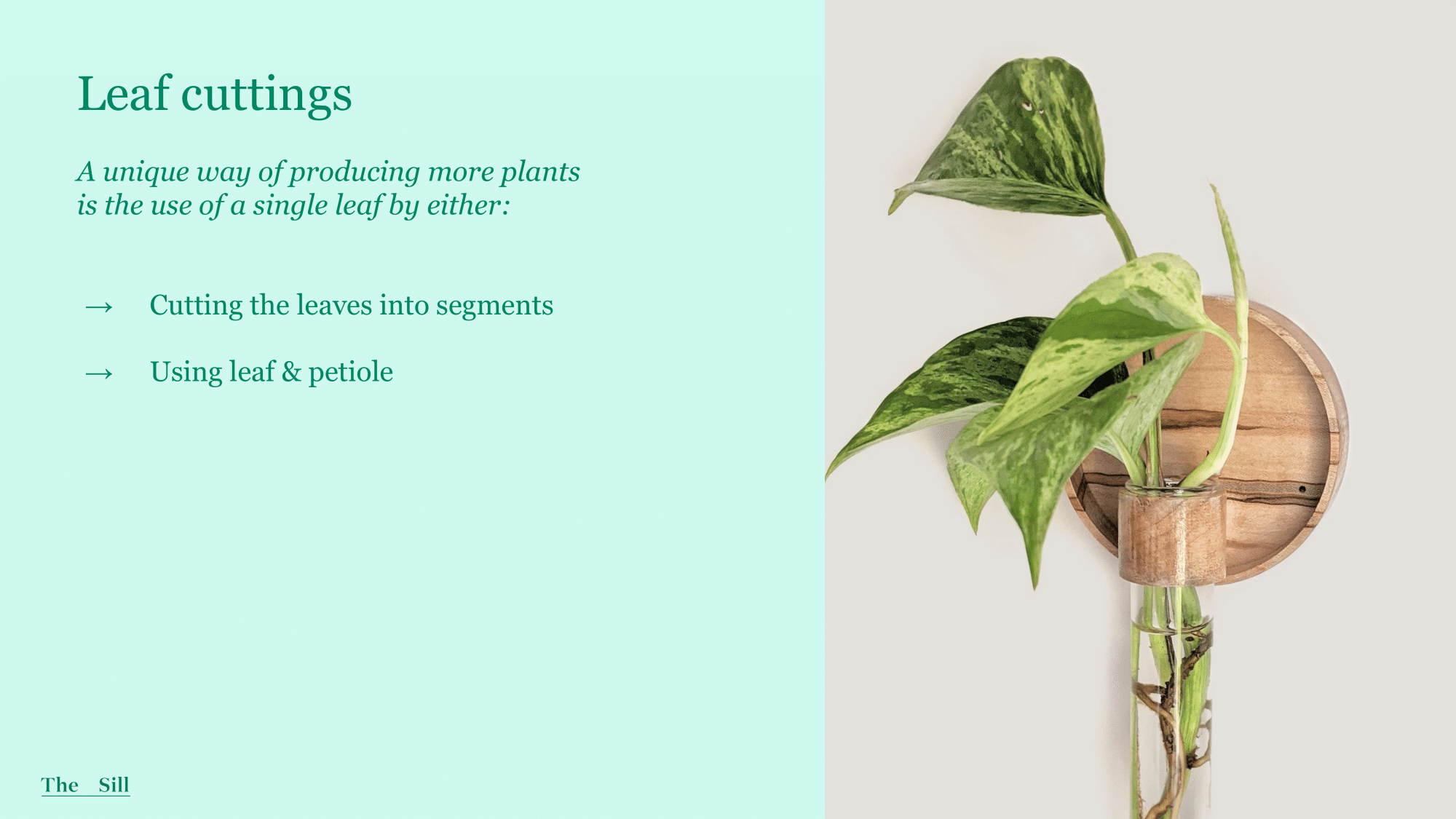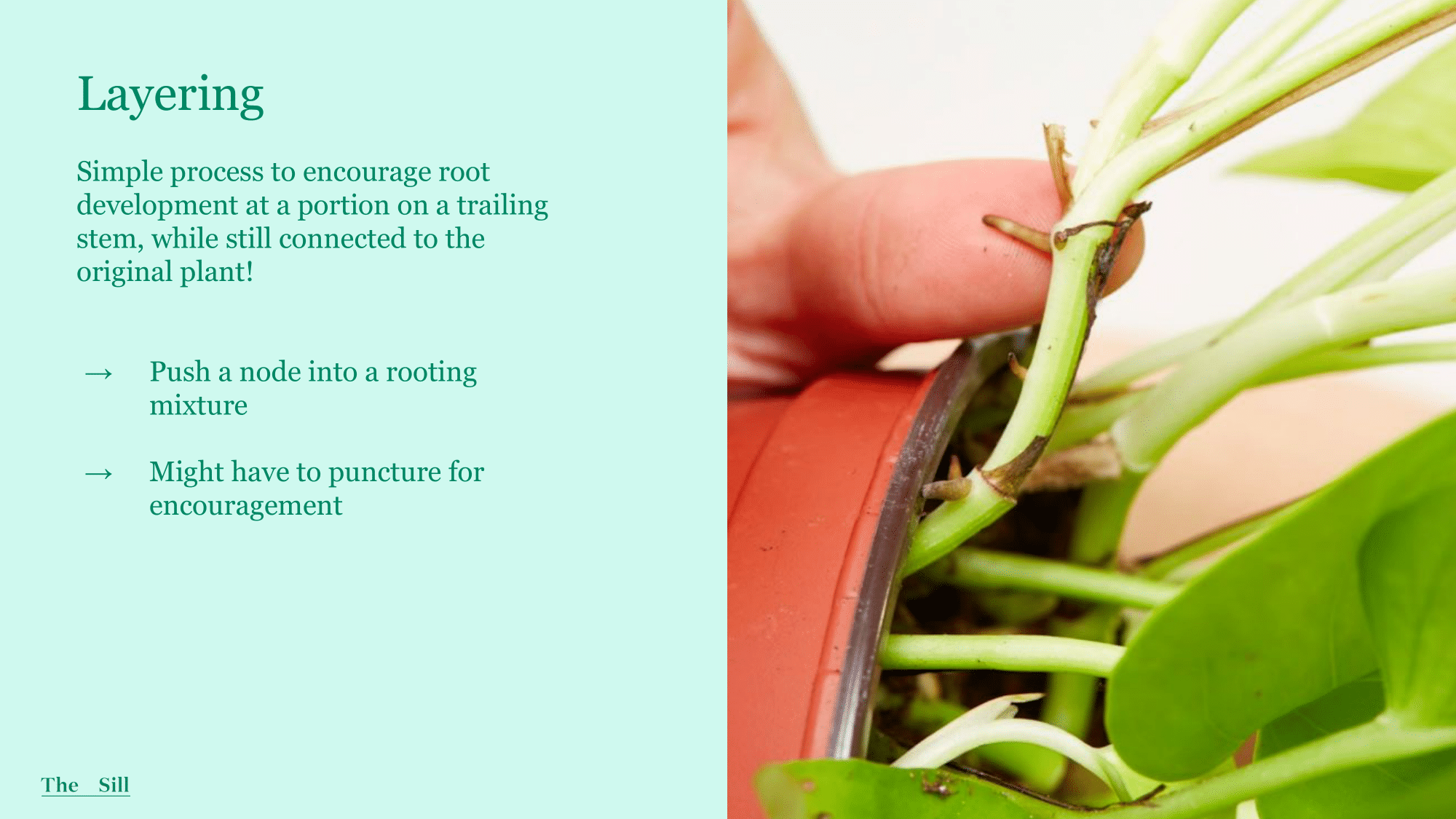Propagation
Part 4 of 5

What is Propagation?
Propagation can be done for many reason like refreshing an older plant that has grown leggy or less attractive. You can do it to multiply plants in your existing collection (for free), which are great for those that are on a budget or want to share their plants with loved ones.
- Sexually: by pollinating flowers that eventually bear seeds.
- Asexually: by removing vegetative parts (the method plant parents will use and what we will be demonstrating).
Bright light- East window, or filtered South/West window.
Humidity- around 70% with sufficient airflow for cuttings in soil.
Temps- 55-75 degrees.
Water- refresh water weekly for those cuttings in water, water cuttings in soil once top 2-3 inches dries out.

Stem Cuttings
What is a node? A point where a leaf is attached or even below an aerial root.When taking a stem cutting, it’s best to remove older leaves at the base where roots will form, but also so the cutting can focus energy on root development rather than retaining a bunch of leaves.
- Water - Place in glass vessel filled with tepid water and place in bright light which will encourage roots to grow faster. Once roots develop to be 2-3 inches long you can then transfer it into soil.
- Soil - Rooting hormone can be used to encourage roots that will be started in soil. Can dip cutting end into water, and then into rooting hormone (tap off excess hormone as less is more in this case), then plant in a moistened potting mix (or can give a thorough watering after planting).

Leaf Cuttings
- Segments - This is a process of cutting a single leaf into different segments to propagate in soil or water. Examples include Snake plants, begonia rex, african violet, most peperomia species, etc.
- Leaf Cuttings - Taking an entire leaf (and possibly petiole depending on the species) to propagate in soil or water. Examples include Peperomia, snake plants, echeveria, Sansevieria cylindrica & most other succulents, Cacti (opuntia), etc.

Division
Root division - Best to do for larger plants that have formed several clumps so you can easily separate a plant into several self supporting ones that already have roots. Some plants can only be propagated in this manner like Peace Lilies, Calatheas, but most of all other plants can be propagated in this manner when large enough.

Plantlets and Offsets
- Plantlets - Examples include Kalanchoe ‘mother of thousands, Spider plants,
- Offsets - Examples include Haworthia, Aloe, Bromeliads, Agave, many species of Cacti, Snake plants, Tillandsia air plants.
- Can start in water or soil

Layering
This is a great way to propagate vining, epiphytic plants (Pothos, Philodendron), and other vines like String of hearts, bananas, etc.
- 1st Method: Push simply push a node into a rooting mixture which can be secured down using floral pines or wire. Overtime roots will grow along that stem to keep that stem in the soil. This helps to layer in more vines into the base of a plant to add fullness!
- 2nd Method: Surround the parent plant with smaller pots (or place underneath hanging trailing plant) so that trailing stems are in contact with that soil and they’ll eventually take root. Once they do you can make a cut to remove those vines from the parent plant- foolproof way of propagating without removing anything.

